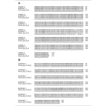
Photo from archive.org
Abstract Here, Ungla Navás, 1914, a poorly known Neotropical genus is reviewed. Twenty-five valid species are recognized; seven of them are new to science: Ungla adamsi sp. n., U. elbergi… Click to show full abstract
Abstract Here, Ungla Navás, 1914, a poorly known Neotropical genus is reviewed. Twenty-five valid species are recognized; seven of them are new to science: Ungla adamsi sp. n., U. elbergi sp. n., U. grandispiracula sp. n., U. mexicana sp. n., U. pennyi sp. n., U. quchapampa sp. n., U. stangei sp. n.; and five are transferred to Ungla from other genera: U. bolivari (Banks), U. chacranella (Banks), U. siderocephala (Navás), U. steinbachi (Navás), and U. banksi Tauber, new replacement name. In addition, ten new synonymies are identified. For each species, a full nomenclatural history, diagnosis, description or redescription with images, literature citations, and available information on the distribution and biology are provided. Name-bearing types were examined for each species, and images of most are included. Keys based on external features are provided for species identifications. As a result of this study, three generalizations appear: (1) The genital morphology of both males and females of Ungla species is very conserved. All species express a common structural pattern, the components of which vary only slightly among species. (2) Ungla species appear to fall into two geographically distinct groups: about one third (n=7) of the species are recorded from southern South America (specifically Argentina and Brazil) and the other approximately two thirds of the species (n=18) from more northern regions of Neotropical America [Andean and Caribbean regions, Central America, and southern Mexico (Chiapas)]. None of the species from either of the regions is known to overlap into the other region. (3) Available information on the immature stages and natural history of species in Ungla is meagre.
Journal Title: ZooKeys
Year Published: 2017
Link to full text (if available)
Share on Social Media: Sign Up to like & get
recommendations!